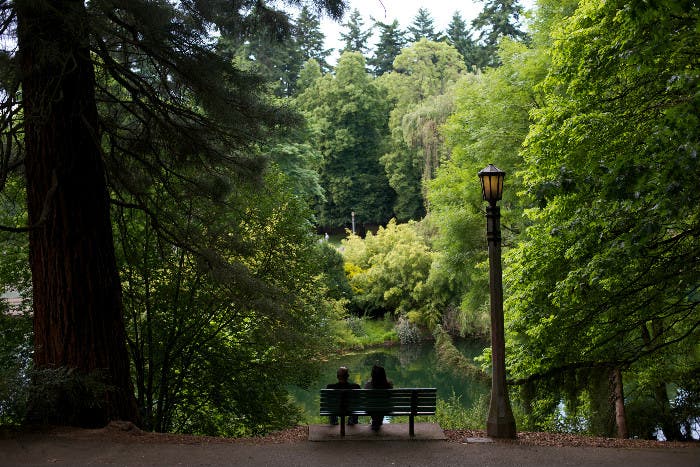Urbanisation and urban forests are likely to become some of the defining elements of the 21st century, according to research from the USDA Forest Service.

By 2100, forests will likely move from the wild outdoors to a block near you, says the USDA Forest Service. According to a new study, published by researchers at the governmental organization, urban land surface in the Lower 48 states will more than double between 2010 and 2060. That space, as our attractive, well-informed readers already suspect, must come from somewhere — mainly, the surrounding forests and farmland. Along with the fact that size tends to amplify cities’ innate drawbacks, this will have a negative impact on the environmental quality and general well-being of residents.
The big get bigger
Between 2000 and 2010, urban land increased from 2.6 percent of the overall land surface to 3 percent (from 58 million acres to 68 million acres). The states that saw the greatest urban growth were in the South and Southeast: Texas, Florida, North Carolina, Georgia, and South Carolina. The authors anticipate that between 2010 and 2060, that area will increase by a whopping 95.5 million acres, reaching a total of 163 million acres (8.6% of land area). To put that into perspective, the projected increase of 95.5 million acres represents an area larger than the whole state of Montana.
In addition to estimating how urban areas will evolve, the research also freshened up previous assessments on the size of the US’ urban forests. Overall, they contain roughly 5.5 billion trees (39.4% of tree cover) shelling out in excess of $18 billion in benefits to society. That estimated sum includes health benefits associated with better air quality, negative costs from cities’ higher climate change resilience, and savings on energy use. In a previous study, lead author David Nowak of the USDA Forest Service’s Forest Inventory and Analysis Program found that (among other benefits) urban forests across the US save 670 human lives each year, and help nip 575,000 incidents of acute respiratory symptoms in the bud.
“Urbanization and urban forests are likely to be one the most important forest influences and influential forests of the 21st Century,” said Nowak.
“A healthy and well-managed urban forest can help reduce some of the environmental issues associated with urbanization such as increased air temperatures and energy use, reduced air and water quality, and increased human stress, and ultimately help people living within and around urban areas.”
It’s not just the body either. Spending time in nature simply makes us feel better, and such urban forests could soothe the weary, dreary urban soul.
Greening up the place
So which Americans stand to gain most from trees moving into the big city? One way to find out is by looking at which states have the largest percentage of urban land (and by extension, have the least forests and other wild areas). These states are all along the Atlantic coast and have relatively small total areas: New Jersey, Rhode Island, Massachusetts, Connecticut, and Delaware.
States that have the greatest amount of projected land growth (California, Texas, Florida, North Carolina and Pennsylvania) would also stand to benefit a lot from weaving forest into their to-be-developed areas — especially since the projected increase in each state over the next 50 years is greater than the size of Connecticut (3 million acres).
“Research by the USDA Forest Service is informing cities and communities as they make decisions about managing urban forests,” said Tony Ferguson, Director of the USDA Forest Service’s Northern Research Station and the Forest Products Laboratory.
“By measuring and monitoring urban forests, society can better understand the value urban forests deliver, and how urban forests and their role in reducing pollution and reducing energy costs changes over time.”
The findings likely extend to other countries beyond the US, especially those with a comparable level of development or those which are expecting a rapid rise in urban populations.
All in all, the study’s results line up surprisingly closely with Professor Alan Marshall’s vision of the future cities: Ecotopia 2121.
The paper “US Urban Forest Statistics, Values, and Projections” has been published in the Journal of Forestry.


